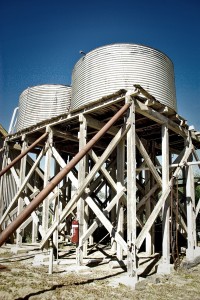 If you’ve worked around asbestos, you may be wondering what the dangers are. Exposure to asbestos can cause a wide variety of diseases, including mesothelioma. This deadly cancer affects the lining of your chest, abdomen, and lungs. Early warning signs include fluid buildup around the lungs, cough, and fatigue. As with all cancers, the most effective treatment for asbestos-related disease is prevention.
If you’ve worked around asbestos, you may be wondering what the dangers are. Exposure to asbestos can cause a wide variety of diseases, including mesothelioma. This deadly cancer affects the lining of your chest, abdomen, and lungs. Early warning signs include fluid buildup around the lungs, cough, and fatigue. As with all cancers, the most effective treatment for asbestos-related disease is prevention.
Old buildings often contain asbestos, including decorative ceilings. Some patching compounds and textured paint also contain asbestos, which is a common ingredient in building materials. Although asbestos use in new construction was banned in 1977, homes and buildings constructed before that date may still contain asbestos. Also, vinyl floor tiles and sheet flooring contain asbestos.
Asbestos is a known carcinogen, so it’s important to take precautions to prevent exposure to asbestos. While there are no symptoms of asbestos exposure in most people, it’s important to know how to protect yourself from this dangerous substance. Asbestos fibers are easily released when plaster breaks, cracks form in walls, and walls become damp and damaged. It’s important to address asbestos exposure immediately in these cases, but don’t worry if you’ve never been exposed to it. You never know when you might have an asbestos-related incident, so it’s crucial to stay vigilant about regular health checkups and notify your health care provider of any exposure.
When you’re exposed to asbestos, your body will absorb fibers, usually, by breathing them in, making the lungs the most likely site of any problem and causing you to develop symptoms. Asbestos is toxic in small doses, and the longer you’re exposed to it, the worse your health will become. It’s important to seek proper medical care if you suspect that you’ve been exposed to asbestos in your home. It’s especially important to take precautions to protect yourself and your family.
If you’re not sure what your symptoms mean, ask your family doctor. Inhalation of asbestos fibers can cause cancer. Even if a person is exposed to low-level amounts of asbestos in the air, they can still cause lung cancer, mesothelioma, and asbestosis. If you’ve smoked in your lifetime, you’re even more likely to be affected by asbestos because cigarette smoke irritates your respiratory tract. When contaminated food or liquids contain asbestos, it’s likely that you’re swallowing the fibers in the product.
If you’re renovating or remodeling an older building, asbestos exposure is a serious concern. Asbestos fibres can become airborne when disturbed. Contractors must take appropriate precautions to minimize the risk of asbestos contamination. You should hire licensed asbestos abatement contractors who are licensed to work in your area. If you are unsure of their background and experience, check with your local air pollution control board, worker safety agency, and the Better Business Bureau.



 If you own a home for any length of time, you will probably plan to improve some aspect of it at some point, even if it’s just painting a door or a wall. And home improvement can also be a great hobby: it can build useful skills and give you a great sense of satisfaction. Of course, it can also improve the function and look of your home, provided it is done correctly!
If you own a home for any length of time, you will probably plan to improve some aspect of it at some point, even if it’s just painting a door or a wall. And home improvement can also be a great hobby: it can build useful skills and give you a great sense of satisfaction. Of course, it can also improve the function and look of your home, provided it is done correctly! It is important to use the highest quality supplies and tools when doing a home improvement project. You may spend more initially, but you’ll save money down the road. Better quality products survive wear and tear and last longer. Tools can be expensive and you don’t want to have to replace them regularly.
It is important to use the highest quality supplies and tools when doing a home improvement project. You may spend more initially, but you’ll save money down the road. Better quality products survive wear and tear and last longer. Tools can be expensive and you don’t want to have to replace them regularly. Before you start remodeling or redecorating a room, bring in a professional for an electrical checkup. This is a legal requirement in some places. You also need to check the plumbing, to be sure that it is in good working condition. It’s no fun having to tear out a new floor or rip into a new wall, to make a repair that should have been done before doing the work.
Before you start remodeling or redecorating a room, bring in a professional for an electrical checkup. This is a legal requirement in some places. You also need to check the plumbing, to be sure that it is in good working condition. It’s no fun having to tear out a new floor or rip into a new wall, to make a repair that should have been done before doing the work.













